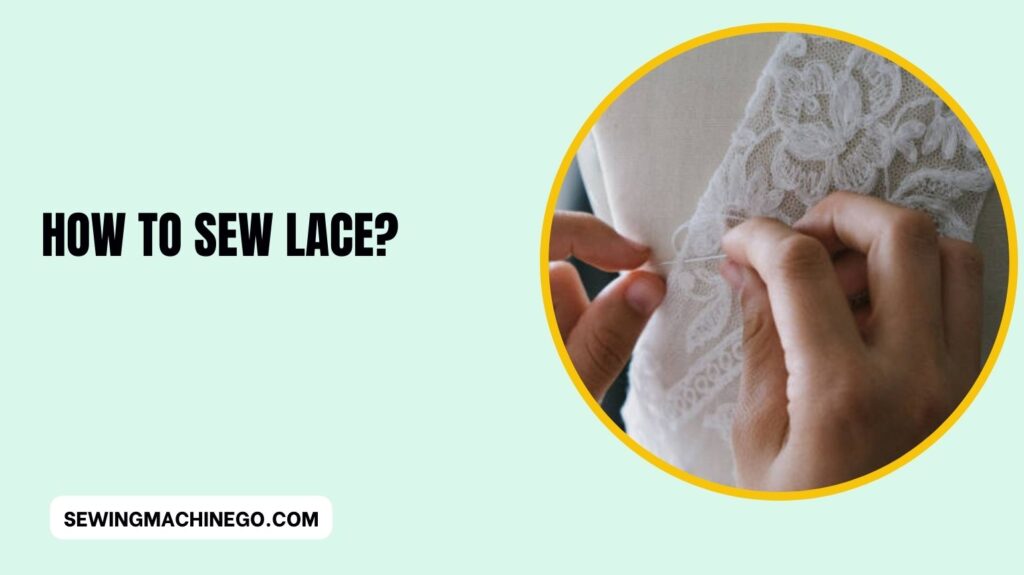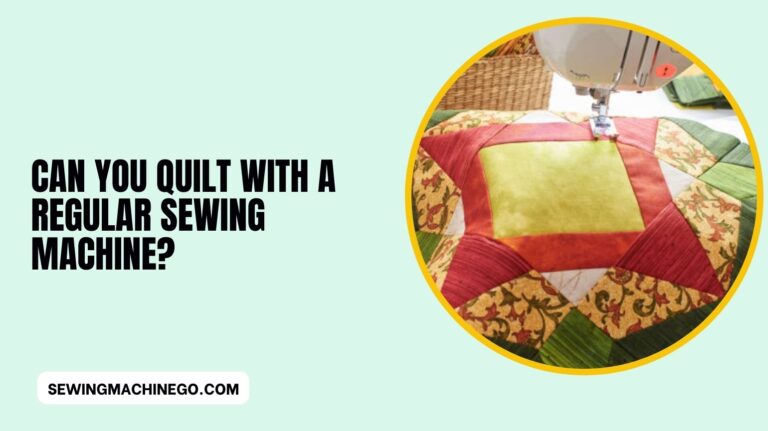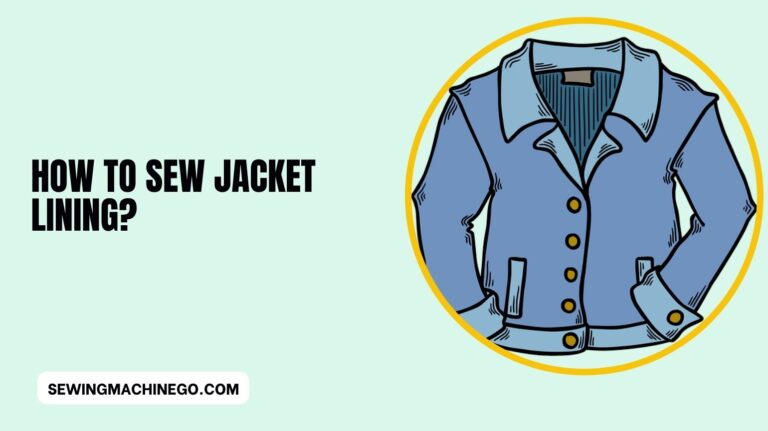How to Sew Lace? (Step By Steps Guide) In 2024
Lace adds a touch of elegance and intricacy to any garment or project, making it a cherished skill in the realm of sewing. How to Sew Lace?
Whether you’re a beginner or an experienced sewist looking to delve into the delicate art of sewing lace, mastering this craft involves understanding different lace types, essential tools, techniques, and proper care practices.

Introduction to Sewing Lace
Sewing lace involves working with delicate, ornate fabrics known for their intricate patterns and openwork designs. It requires patience, precision, and attention to detail.
The art of sewing lace dates back centuries, and its timeless appeal continues to captivate modern fashion and interior design enthusiasts alike.
Understanding Different Types of Lace
Sewing with lace involves navigating various types, each with its characteristics and techniques. Chantilly lace, known for its delicate floral patterns, requires careful handling due to its intricate design.
Guipure lace, on the other hand, boasts a more substantial and textured feel, perfect for creating bold accents. Corded lace adds dimension with its raised motifs, while eyelet lace offers a charming simplicity with its punched-out designs.
Mastering these different lace types involves not just skillful stitching but also an understanding of their unique qualities to elevate any sewing project.
Traditional Lace
Traditional lace, like Chantilly and Venetian lace, boasts intricate floral patterns and fine detail. Its delicate nature requires careful handling and precise stitching techniques.
Stretch Lace
Popular in lingerie and apparel, stretch lace offers flexibility due to its elastic nature. Sewing stretch lace demands specialized techniques to maintain both its elasticity and aesthetic appeal.
Guipure Lace
Characterized by its bold designs and stiff texture, guipure lace stands out for its raised motifs and durability. Sewing guipure lace requires attention to detail to maintain its structural integrity.
Essential Tools and Materials for Sewing Lace
When sewing lace, having the right tools and materials can make the process smoother. You’ll need fine needles, preferably with a small eye, to avoid snagging delicate lace.
Use fine thread that matches the color of your lace for a seamless finish. A pair of sharp embroidery scissors will help with precise cutting.
Pins, especially fine or silk pins, are handy for holding the lace in place during sewing. Consider using a transparent ruler for accurate measurements and marking pens or chalk for tracing patterns onto the lace.
Lastly, a smooth surface, such as a pressing cloth or silicone ironing sheet, will protect the delicate lace while pressing.
Sewing Machine vs Hand Sewing
Deciding between using a sewing machine or hand sewing depends on the project’s intricacy and personal preference. While a machine offers efficiency, hand sewing allows for greater control and precision.
Needle and Thread Selection
Choosing the right needle and thread is crucial when sewing lace. Fine needles and threads matching the lace fabric ensure neat, unobtrusive stitches.
Fabric Choices for Lace
Selecting suitable fabrics to complement lace is vital. Fabrics like silk, satin, or chiffon often pair beautifully with lace, enhancing its delicate allure.
Preparation and Cutting of Lace Fabric
Preparing lace fabric for sewing involves several steps to ensure a smooth and precise outcome. Begin by carefully laying out the lace on a clean, flat surface, ensuring it’s free of wrinkles.
Take measurements according to your pattern, marking the lace fabric with the tailor’s chalk or fabric markers. Employ sharp scissors or rotary cutters to meticulously cut along the marked lines,
maintaining a steady hand to prevent fraying. Remember to handle the delicate lace with care to preserve its intricate details while cutting.
Pattern Preparation
Preparing a pattern involves careful placement and layout to showcase the lace’s design. Pattern alignment is crucial for a visually appealing finished product.
Cutting Techniques
Precision is key when cutting lace fabric. Techniques such as using small, sharp scissors and stabilizing the fabric prevent fraying and ensure clean edges.
Techniques for Sewing Lace
Sewing lace demands delicacy and precision. Begin by pinning the lace onto the fabric, ensuring it lies flat without wrinkles.
Employ a fine needle and lightweight thread to stitch along the edges, using a straight or zigzag stitch for security.
Take care to match the thread color to the lace for a seamless finish. When joining lace pieces, align them precisely and use a small, nearly invisible whip stitch.
Lastly, gently press the finished work with a cool iron to set the stitches without damaging the delicate lace.
Seam Finishing Methods
Finishing lace seams requires finesse. Options like zigzag stitching or using narrow lace edging techniques contribute to a polished look.
Joining Lace Pieces
Attaching lace pieces seamlessly demands precision. Techniques like hand basting or pinning aid in aligning and joining intricate lace sections.
Adding Embellishments
Enhance lace projects by incorporating embellishments like beads, sequins, or appliques. Carefully applied embellishments elevate the visual appeal of lace creations.
Tips for Care and Maintenance of Lace Projects
Maintaining lace projects involves delicate care. When sewing lace, ensure your workspace is clean to avoid snagging or tearing delicate threads. Use fine, sharp needles and matching thread to prevent damage.
Handwashing or using a gentle cycle in a mesh laundry bag preserves the lace’s intricate details. Air-dry flat to maintain its shape and avoid stretching.
Store lace items flat or rolled to prevent creasing. Regularly check for loose threads or damage, repairing them promptly to preserve the overall integrity of the piece.
Washing and Storing Lace Items
Proper laundering and storage techniques, such as hand washing with mild detergent and storing lace items flat or rolled, prolong their lifespan.
Repairing Lace Fabric
Addressing minor tears or snags promptly ensures lace garments retain their original beauty. Techniques like invisible mending help preserve the integrity of the fabric.
People also ask
What is the best stitch for sewing lace?
For sewing lace, a straight stitch or a narrow zigzag stitch often works best.
These stitches maintain the integrity of delicate lace while ensuring secure seams without overpowering the fabric’s delicate look.
How do you sew seams on lace?
When sewing seams on lace, using a fine needle and a straight or zigzag stitch is common.
To prevent bulkiness, consider trimming excess seam allowance and finishing the edges with a narrow zigzag stitch or delicate lace edging techniques for a clean, elegant finish.
Can you make lace on a sewing machine?
While creating intricate lace entirely on a sewing machine might be challenging,
you can sew decorative lace trims or embellishments using specialized machine stitches, lace patterns, or attachments, adding intricate lace-like details to your projects.
How do you finish the edge of lace fabric?
To finish the edge of the lace fabric, you can use several methods. One common approach is to trim the edges with pinking shears to prevent fraying.
Alternatively, consider using a narrow zigzag stitch, a serger, or delicate lace edging techniques for a neat and elegant finish.
Conclusion – How to Sew Lace?
Mastering the art of sewing lace involves patience, precision, and practice. By following the steps outlined, you can create delicate, beautiful creations with this intricate fabric.
Experiment, embrace mistakes as learning opportunities, and soon you’ll confidently sew lace into stunning designs, adding an elegant touch to your creations.

Hi, I am Alice, and I am your perfect guide to the world of sewing machines. With over 10 years of experience in the sewing industry, I am passionate about sharing my knowledge and expertise to help you make the most of your sewing journey. about me






